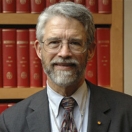
Dr. Sidney Drell, who passed away in Palo Alto Wednesday at the age of 90, was not only a distinguished theoretical physicist but a charismatic leader of scientific and academic institutions, a pioneer in national intelligence, a world-renowned expert on nuclear arms control and nonproliferation, and a trusted advisor at the top levels of the Federal government for over 50 years. I was also lucky enough to count him as a friend.
Dr. Drell, known to his many friends and colleagues as Sid, served for decades as Deputy Director and Professor of Theoretical Physics at the Stanford Linear Accelerator Center (SLAC). He was the founding Co-Director of Stanford’s Center for International Security and Arms Control and one of the world’s most forceful advocates for reducing the dangers from nuclear weapons.
Sid was a member of the President’s Science Advisory Committee--the predecessor of the President’s Council of Advisors on Science and Technology (PCAST), which I currently lead--under Presidents Johnson and Nixon. He was also a member of the President’s Foreign Intelligence Advisory Committee under President Clinton, a founding member of the JASON defense advisory group, and the chairman of technical panels for both the House Armed Services Committee and the Senate Select Committee on Intelligence, among other high-level advisory roles.
His many honors included a MacArthur Foundation “genius” award, the Heinz Prize for Public Policy, the Department of Energy’s Fermi Award, and the National Intelligence Distinguished Service Medal. In February of 2013, President Obama had the privilege of presenting Sid with the National Medal of Science, a ceremony I had the honor of witnessing.
Ours is a field with many legends, but Sid will be remembered as one of them. His contributions to science, national security, and our country represent a lasting legacy worthy of deep admiration and immense gratitude.


